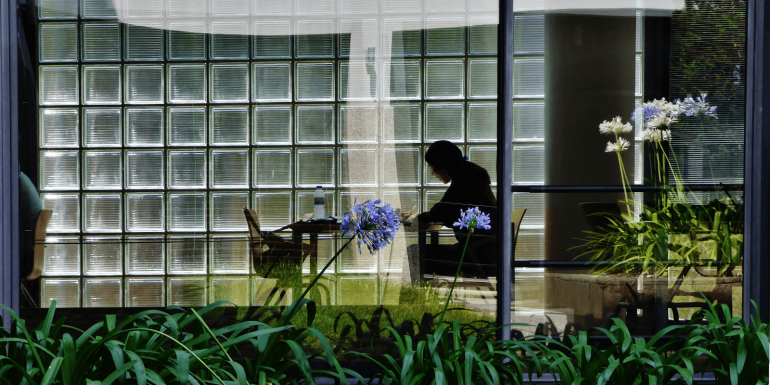Emerging Fields Q&A

Our webinar: Emerging fields of study: How to identify key target markets to grow and compete online, certainly generated a lot of buzz — and great feedback! In our last blog, we provided an overview of five emerging degree trends. In this one, we’d like to highlight five of the questions our presenters, Brian DeKemper, Director of Business Development, and Darcy Wilson, Associate Research Director, received following the presentation. (Note the time codes in case you want to listen to the complete answer in the webinar recording.)
[32:20] What’s the ROI for launching undergraduate versus graduate online programs?
Brian: In terms of ROI for undergraduate program opportunities, we find that it is important to leverage a suite of programs to target a broad spectrum of the addressable market. The reason for this is that competitive undergraduate programs typically have very competitive tuition rates, so in order to sustain the costs behind things like student support services and transfer credit evaluation services, you need to attract enough student volume to offset the costs of those extremely important, previously mentioned resources.
Similar to our ASU or Maryville partnership models, we’ve found that, if students are looking for an undergraduate degree program, you’ll want to have enough variety in your portfolio to capture as many students as possible.
The most important lesson is to start out by fully understanding the economics behind these things before you start developing programs. Make sure to know how much your own “internal” costs of instruction are and how your processes work for prospective student evaluation.
Another important detail when it comes to ROI is student acquisition costs. If you have access to low cost leads that may come from corporate partnerships, industry associations, or referrals — and you can attract students without spending a ton of money on direct marketing and lead acquisition, you’ll also find success ROI can be possible in the undergraduate space, but it is a competitive market, and there is narrow space for opportunity based on what you have to invest into the program.
[34:53] What is the biggest mistake/s schools make when launching a new online program?
Brian: I’d have to say the biggest mistake is when an institution has an idea baked before spending the right amount of time looking at the industry, evaluating competitors, talking to faculty, or their target audience. If you don’t try to keep your programs designed to be as nimble as possible, it’s hard to adjust to competition if you need to add a couple of concentrations or adjust tuition to be competitive. Keep an open mind about how to build and launch the program, because after the program is launched, making changes to react can be very challenging.
Darcy: Success with emerging degrees requires the institution to create demand for the program by educating potential students about what the degree is, why it is important, and what it can do for them. Clear communication of degree purpose and the compelling focus areas that drive the program should help this cutting-edge program increase enrollments and thrive.
[43:14] How do you learn the brand of your clients to really get them where they need to be?
Brian: Any good (program management or marketing) company that understands why an institution is successful will work to understand the differentiated value of what the school offers. One of the things we do in every conversation we have, is really dive into a program assessment where we’re talking to the faculty and we’re trying to understand: what is the mission of this program, what is the ideal type of student you want to look for, and where do you want it to go in the future?
Then, everyone in the room needs to align the answers to those questions to things like: is this something that students want? Is this (prospective student) market large enough so that we can get enough students to make this venture sustainable?
We also hold institutional-specific sessions where we work to understand the university brand and how the school wants the brand to be portrayed. These conversations are fascinating because you find that many times academic program leaders and university marketing/communication/brand leaders don’t often have the opportunity to work together in such a direct way. We want to understand how we can do this in a unique and differentiated way that makes you stand out from another institution.
[44:45] How is the OPM landscape changing in how they are partnering with universities?
Brian: From our standpoint, the biggest thing that’s changing is the amount of competition and the way people seek out, compare, and evaluate online programs. There are a lot of companies popping up that specialize in different capabilities maybe disaggregated services or different kinds of service models. But, at the end of the day, we have found that we’re able to offer flexible program support services and flexible financial models to support the varying types of needs of an institution.
I think that even the idea of how people (universities) go online has come full circle. Now, after 3–4 years of different competitors coming and going and various types of service models emerging, we find that it comes back to really understanding the student audience and where the job market is going. Educational attainment is extremely important and is a philosophical pillar of our company, but we also know that we serve students.
Students care about value, career advancement, and following their passion. Sometimes all of those things don’t directly align with the legacy mindset of what “a degree” looks like. So, a lot of the changes in the OPM industry have been around how to make sure you can maximize the potential audience, from undergraduate to graduate, degree completion, and all the way through terminal degrees, leveraging all the things our partner schools do and what prospective institutions can do as well.
There is a significant amount of evolution, and we’re happy to say that we’re seeing evolution on our side as well with the kinds of programs, or institutions frankly, that we work with — and the different types of models we use to help them go online.
[48:02] Faculty can be quite wedded to an idea of what the curriculum may look like for a new degree and may be suspicious of thinking about degrees from a more marketing/business perspective. What are some ways you’ve found that worked well when working with faculty?
Brian: I rely heavily on research and an institution’s competitive set. If a program leader at a university says, “we have to do this, and we have to take it in this direction, and we really want the program to look like that,” one of the things we might say is, let’s take a look at your five biggest competitors, locally and regionally, who are doing the exact same thing. Maybe they all have really low degree conferral numbers, which would mean that there isn’t much opportunity for a program to grow or scale.
It might be something the institution or faculty really want to do, but the prospective program might just not be a sustainable opportunity. We can say that students are simply not interested in this kind of market or program, whatever it may be, and try to let the data really tell the story.
It’s our job to identify the data for the institution to use to find an operational and sustainable program to go online. That means that when it comes to something faculty are really looking for, we try to help them understand what the overall viability looks like based on the types of program attributes they’re trying to put together.
Darcy: We’re also looking at metrics that they deem important for brand strength, such as their U.S. News & World Report ranking, total conferrals, total enrollments, ranked programs, and the institutions accrediting body. These are some of the key metrics to help an institution understand who its key peers are and provide a more defined recommendation when uncovering the market viability of the program.
[50:55] What are the types of things that Pearson does to develop leads?
Brian: One of our primary value propositions is sourcing high-quality students that fill the needs of universities and help them grow and scale. In terms of lead acquisition and generation, we don’t buy leads or source lists of contacts. Rather, through our understanding of the program and the DNA of the institution and how they want to be differentiated and go to market, and through our research and data points, we build assets and different types of content and collateral and utilize them in traditional channels. It could be a web page or digital advertising through LinkedIn, Facebook, or Google paid search, or different types of media.
We do experimental things that are starting to take shape in terms of radio or television, like Pandora, or a conference or magazine publication — wherever the particular type of student we’re looking for might be and tailor the content accordingly, ensuring we’re using the right channel to develop a lead and gain interest.
It might be a diversification strategy as well to say where can we get the best quality and best converting types of students for these programs. Each program has its own angle on where to go to find the right students, and we rely on our research and data to find those leads that we can convert into students who ultimately become graduates.
We also answer the following questions in the webinar recording:
- What would the average cost be to acquire a non-organic adult bachelor’s enrollment? [46:35]
- Have you worked with Christian Bible colleges or universities? [42:00]
- What has your experience shown about the appeal of full MA degrees vs. grad certificates? What is more valuable to students? [39:18]
- How can you project Customer Acquisition Cost? [53:24]
Watch the complete webinar to hear those answers.
If you have your own questions, please contact us. We’d be happy to follow up personally: Brian DeKemper and Darcy Wilson.
read more



